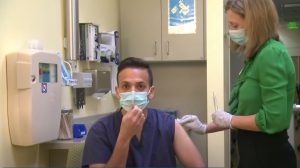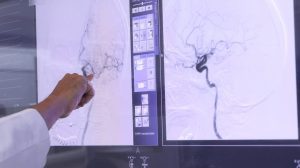NEW YORK (Reuters Health) – Most patients with acute variceal bleeding have a relatively low 6-week mortality risk after standard-of-care treatment, but those with high creatinine levels have a poor prognosis and therefore warrant aggressive intervention with early placement of a transjugular intrahepatic portosystemic shunt (TIPS).
That conclusion comes from a Spanish study, reported in the American Journal of Gastroenterology published online May 31.
The authors explain that after acute variceal bleeding, high-risk patients may benefit from an early decision for aggressive management while low-risk patients might be spared unnecessary interventions. However, the mortality risk among different subgroups of patients after currently recommended treatment with vasoactive drugs and endoscopic ligation is unknown.
To investigate, Dr. Salvador Augustin, with Hospital Universitari Vall d’Hebron in Barcelona, and colleagues analyzed outcomes in 162 cirrhotic patients with acute esophageal variceal bleeding treated with combined pharmacologic therapy (somatostatin plus antibiotics) and emergency endoscopic ligation.
Patients with Child-Pugh A severity or Child-Pugh B without active bleeding were classified as low risk; those with Child-Pugh B with active bleeding or Child-Pugh C disease were classified as high risk.
Among the 162 ligated patients, 23 (14%) rebled and 26 (16%) died in the first 6 weeks of follow-up, according to the report.
Stratified 6-week mortality was 7% in the low-risk group and 33% in the high-risk group. However, in the latter group, mortality was similar to the low-risk group at 8% among patients with creatinine levels <1.0 mg/dL, but was 46% among those with creatinine of 1.0 mg/dL or higher, Dr. Augustin and colleagues report.
They reiterate that early use of TIPS may lead to a change in the management of high-risk patients with acute variceal bleeding, and conclude: “In this observational study, we show that previous criteria to identify such patients may not be adequate, providing a new classification rule (Child-Pugh C with baseline creatinine ?1.0) to better identify a high-risk population in this setting, in order to optimize the use of TIPS in clinical practice and for research purposes.”
Reference:
Effectiveness of Combined Pharmacologic and Ligation Therapy in High-Risk Patients With Acute Esophageal Variceal Bleeding
Am J Gastroenterol 2011.




